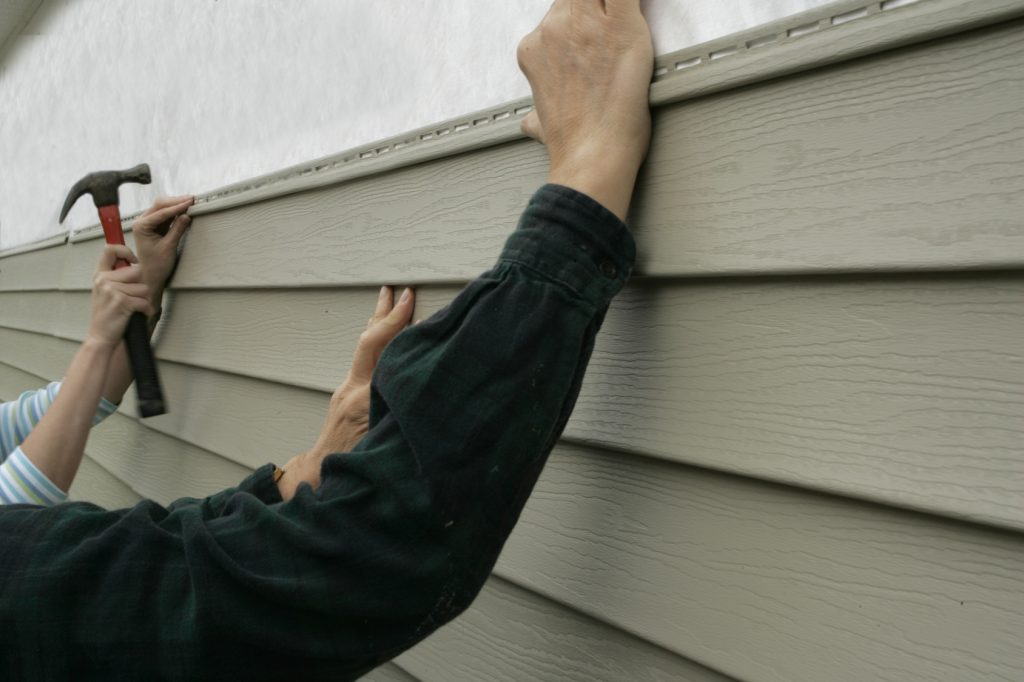The siding on your house might be strong and durable, but eventually, it’s going to need to be replaced or repaired. Its resilience and repair needs are going to vary depending on the type of material you use, the nature of your house, and lots of other variables.
So how exactly should you know when to replace your siding? And how often does home siding need to be replaced?
An Introduction to Home Siding
Siding is one of those things homeowners don’t think about much, at least until it starts to crack, fade, or buckle. But it’s arguably one of the most important and essential features of your house. It quietly protects your home from wind, rain, pests, and extreme temperatures. But like any part of your home’s exterior, siding has a shelf life, and eventually, it may need to be replaced.
If you’ve been noticing signs of wear or simply wondering whether your siding is still doing its job, you may be confused about your options or hesitant about how to proceed. Replacing siding isn’t a small decision, but knowing when to take action can save you money in the long run, and prevent more serious problems down the line for many homeowners.
Here’s how to determine whether your siding needs replacing, and what to consider before making the upgrade.
Age and Longevity
Different siding materials have different lifespans, but most aren’t designed to last forever. Vinyl siding, for example, typically lasts around 30 to 40 years. Wood can last longer with proper maintenance, but it’s more vulnerable to moisture and insects. Fiber cement and engineered wood options can push 30 years or more under the right conditions.
If your siding is approaching or has already passed its expected lifespan — especially if it hasn’t been regularly maintained — it’s worth getting a professional inspection to determine what damage, if any, your siding has suffered. Even if the damage isn’t obvious from the street, time takes a toll, and small issues can turn into big ones without much warning. In these matters, it’s usually better to be proactive than reactive.
No matter what, all siding needs to be replaced eventually.
Signs It’s Time for Replacement
You don’t need to be a siding expert to spot some of the early red flags. If your siding is visibly warped, cracked, or peeling, that’s a clear sign it’s no longer performing as intended. Holes or gaps — even small ones — can allow moisture or pests to creep in behind the panels.
Staining, mold growth, or bubbling paint may also indicate water damage underneath the siding surface. In some cases, you might even notice higher energy bills due to weakened insulation, which is a less visible, but just as costly, side effect of failing siding.
If one area of siding is damaged but the rest is in good shape, a targeted repair may be enough. But widespread issues are a strong signal that replacement is the smarter, longer-lasting solution.
Curb Appeal (and Resale Value) Matters
Even if your siding is technically still doing its job, outdated or faded panels can drag down your home’s appearance. Replacing siding can dramatically improve curb appeal, modernize your exterior, and even raise your property value, especially if you’re considering a sale within the next few years.
New siding also gives you the chance to change colors or materials for a fresh look that better suits your taste or your neighborhood. Some homeowners treat siding replacement as part of a larger exterior refresh, combining it with new trim, gutters, or window framing for a cohesive upgrade.
Watch the Weather and the Seasons
Timing can play a big role in when you replace your siding as well. Spring and early fall are often ideal because of milder temperatures and lower humidity. Summer installations are common too, but high heat can occasionally make materials more difficult to handle, which is especially true for vinyl, which expands and contracts with temperature changes.
If you live in an area with harsh winters, replacing siding before the cold sets in can help insulate your home and protect it from ice and snow damage. The key is to schedule your project early enough to avoid weather delays or backlogs with local contractors.
The Bottom Line
Siding doesn’t last forever, but replacing it at the right time can save you from expensive repairs and give your home a serious visual boost in the process. If you’re seeing signs of damage, dealing with drafty interiors, or simply tired of the way your home looks, it might be time to take the next step.
A professional inspection can help confirm whether replacement is necessary, or if a repair will buy you a few more good years. Either way, being proactive pays off, and it helps ensure your home stays protected, efficient, and looking its best for as long as possible.

